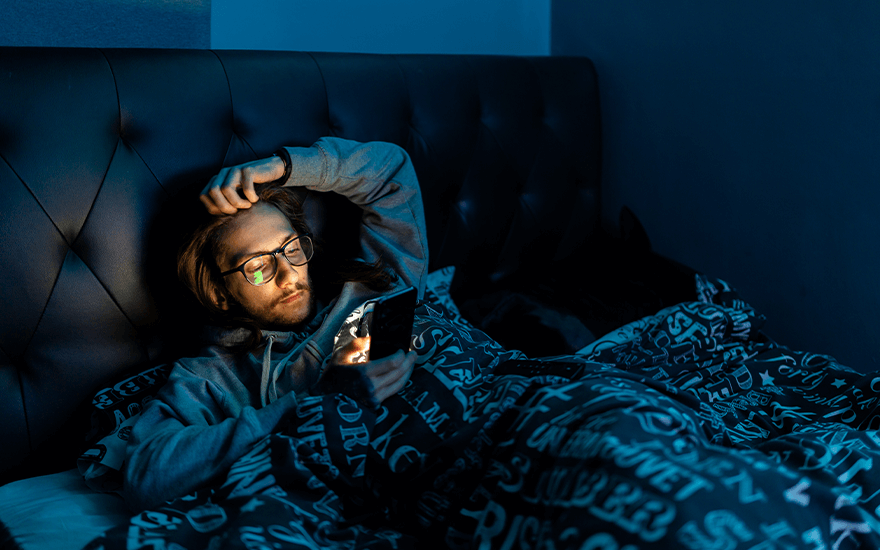Applying the tag of the epidemic to loneliness in 2023 may seem a stretch in a post-pandemic world recovering from the most isolated period of our generation. However, it’s not too far from the truth.
According to research, loneliness increased by 181% in the United States, igniting the mental health issues plaguing people of all ages, backgrounds and demographics.
Loneliness brings excess baggage associated with unhealthy behavioral traits such as smoking or poor eating, affecting sleep and poor relationships with alcohol and illegal substances.
Douglas Nemecek, MD, chief medical officer for a behavioral health insurer, Cigna, says:
“Loneliness has the same impact on mortality as smoking 15 cigarettes a day, making it even more dangerous than obesity”, reflecting on a study conducted in 2018 that he believed uncovered an issue of “epidemic” proportions.”
A widespread problem before the pandemic struck, loneliness figures unsurprisingly reached new, unfathomable heights in 2020, with 58.1% of people feeling “somewhat or much lonelier due to social distancing and shelter-in-place mandates.”
With restrictions now a distant memory and any lingering memories of a universally damaging moment behind us, why is loneliness still an ongoing plague of our society, and how can it be aided?
Muscle and Health looks at the key issues causing people to feel disconnected and, more importantly, how to combat feelings of isolation.
A solo society
There was a noticeable rise in those living alone who felt the separation more than most during the pandemic, with an increase of 38.3% of solo inhabitants feeling more lonely during the pandemic, an issue which Federica Cocco of The Financial Times feels is a “mark of a wealthy society.”
She says, “it is only in recent decades that our risky experiment with loneliness has become almost mainstream” and that it’s “partly a consequence of avoiding or delaying marriage and childbirth, and of single housing becoming more affordable”, but “has serious implications.”
There is a rise in people avoiding the stereotypical and traditional life cycle. Turning 30 isn’t what it used to be, with the pressures of settling down and figuring it all out now replaced by a sense of independent freedom. However, this comes with the looming shadow of self-inflicted isolation.
Social norms around marriage and living arrangements have generally changed in recent decades. Living alone has become culturally more acceptable, with a recent report revealing that a solo dweller occupied 28% of U.S. households.
Studies conducted since the pandemic has highlighted that more people live alone, with a rise in the number of those considering the option. Working from home is now more prominent than ever – a concept which continues to accelerate – meaning more and more of us are becoming more comfortable in our company.

While being able to satisfy our own social needs does hold meaning, it’s important to stress that “humans are social creatures due to our evolutionary history. Our ancestors survived and thrived by living in groups, working together to hunt, gather food, and protect one another from predators “, says trauma expert, Greg Wieting.
“As a result, humans have evolved to be highly social beings, and socializing with others is an important way to stay physically and mentally healthy.”
By becoming more detached from each other, humans have inadvertently disrupted the natural foundations of human evolution. In a time when we need each other more than ever, external factors continue dragging us apart.
It’s clear “our Americanized society puts so much pressure on people to be financially independent, be successful, do it all alone, get the fancier car, grin and bear it, and do the grind while looking happy from the outside,” says Katie Ziskind.
Online, but not connected
The pandemic changed our relationship with technology. We all remember Zoom, a word that now delivers shivers down spines and fires a jolt of PTSD through the minds of all those who suffered endless quizzes and chats through a screen.
We learned how to order groceries for delivery and attend meetings on Zoom. Adapting to these practices, we practically forgot how to socialize.
Despite technology boasting endless benefits and accessible routes to spark up a conversation, albeit a less engaged, we have become reliant on hiding behind our phones, tablets and laptops.
“In 2023, connecting with loved ones is easier than ever. Technology has enabled us to stay in touch and connected even when we’re far apart. However, I’ve realized that virtual connections only go so far, and nothing beats face-to-face interaction”, says Mark Joseph, founder of Parental Queries.
“I remember when the pandemic restrictions were lifted. The first time I went out after restrictions were lightened, it felt like such a joyous occasion that I almost expected something to change. Even after all those months of isolation, I still felt lonely.”
As social distancing became a thing of the past, it seemed inevitable that the vice-like grip technology holds on us would loosen, but it’s only gotten tighter.
Social media has a big part to play. As of 2022, 3.96 billion people are on countless platforms, which is more than half of the world’s population, with the average person spending 147 minutes on social media daily. The average American spends more than 10 hours a day looking at a screen of some kind, bombarded by a constant stream of news, posts, content, information and media.

“Social media can create a sense of comparison and competition, where individuals compare their lives to the carefully curated and often unrealistic images and posts of others. This can lead to feelings of inadequacy, loneliness, and low self-esteem”, says psychotherapist Dana Manzo.
Psychologists have likened the effect and habits of social media consumption to a Skinner Box, an operant conditioning chamber used to study the behavior of animals. Imagine a mouse, a lever, and a delivery chute, with the rodent being rewarded with food when it presses the lever.
But, sometimes, nothing happens when it presses the lever. The mouse learns to keep pushing the lever as it might get a tasty treat, so it pushes and keeps pushing. Then it pushes some more.
This is an eerily similar metaphor for humans scrolling through endless social media posts, an infinite search for that sweet hit of dopamine, the feel-good chemical our brain rewards us with for sifting through the junkyard of posts.
According to an addiction expert Dr. Anna Lembke, “our smartphones are making us dopamine junkies,” and she believes “we need to stop hunting for pleasure all the time” as it’s “too much of a good thing.”
Once the comedown of the dopamine hits, we return to feelings of isolation and a sense of detachment from real life which has thrown human interaction into perspective.
Social media can also contribute to a fear of missing out – more commonly abbreviated to FOMO – where individuals feel anxious or left out when they see their peers engaging in activities or events they are not a part of.
The concept of FOMO existed long before the modern interpretation, but seeing Instagram posts of friends in a nightclub popping a bottle of sparkle-lit cheap champagne and skydiving escapades of daredevils leads many of us to question the excitement in our own lives.
This leads to insecurity and a sense of loneliness created by false expectations of ourselves. As Lembke said, pleasure is too much of a good thing, and exploring the possibility of, ironically, disconnecting from a technologically connected world may tip the dopamine scales in your favor.
Looking at a screen
Humans need meaningful connections as much as they need vitamins and minerals. A disconnected society is nothing new, but it’s earned greater exposure due to the pandemic’s domino effects caused by the meteoric ripple.
However, positive stories and solutions have emerged from the isolation despite the fear of a loneliness epidemic gripping modern society.
Almost 20,000 women in London have joined a club tackling loneliness since pandemic restrictions ended. The sharp spike in members is mainly due to people craving connection in a big city.

Volunteers in the group organize between four and six monthly events, ranging from picnics to cocktail nights, all to create a safe space for people to meet and engage with one another.
“Prioritize connecting with folks who help you feel like your most authentic, best self. These are the people who will cheer you on, like you, love you, and also call you out when you’re not living in alignment with your values”, says psychotherapist and founder of ROAR Wellness Co, Ellen Line.
Social prescribing was also introduced into healthcare systems, offering a variety of schemes and activities aimed at providing people with an improved sense of belonging and forging a great community connection.
Introducing activities such as gardening, arts and crafts, and group learning, the treatment method has been cited as an alternative to medication or therapy. A pilot program of the scheme reported significant improvements in well-being and health, with over 90% improvements for mental health users.
Recently, a Southend-based art student created a bench and confession box to support the national Every Mind Matters campaign and help people feel less lonely. Aimed at 16 to 34-year-olds, the simple concept is part of the national ‘Lift someone out of Loneliness’ campaign.
In response to men not openly speaking about their feelings and being disillusioned with the level of social engagement available, Lucas Krump founded Evryman, a men’s social-health platform, support group and retreat series aimed at “everyday guys”.
Krump describes the group as a “gym” where men can exercise skills to better engage with themselves and others, express themselves and develop their “emotional literacy and resilience.” Popular topics include relationships, work-life balance, fatherhood, and purpose and meaning.
The organization, founded in 2017, boasts over 100 U.S. chapters and has helped thousands of men connect with their “inner world”.
Dr. Sarah Johnson believes some key fundamental steps help to aid feelings of loneliness and isolation. She says, “it’s essential to prioritize online and offline social connections and relationships. This may include contacting friends and family, joining community groups or clubs, or volunteering for causes you care about.
“Other strategies for combating loneliness may include practicing self-care, such as exercise or meditation, seeking professional support, such as therapy or counseling, and engaging in activities that bring you joy and fulfillment.
“It’s also important to address the systemic factors contributing to loneliness, such as poverty, discrimination, and social inequality. By advocating for social justice and promoting inclusive and supportive communities, we can create a more connected and compassionate society that supports the health and wellbeing of all its members.”
Loneliness can become a self-perpetuating cycle – the more socially isolated we become, the harder it is to break out of it and re-establish meaningful connections with other people.
If you’re one of the millions experiencing this, be brave, and take the first step.






